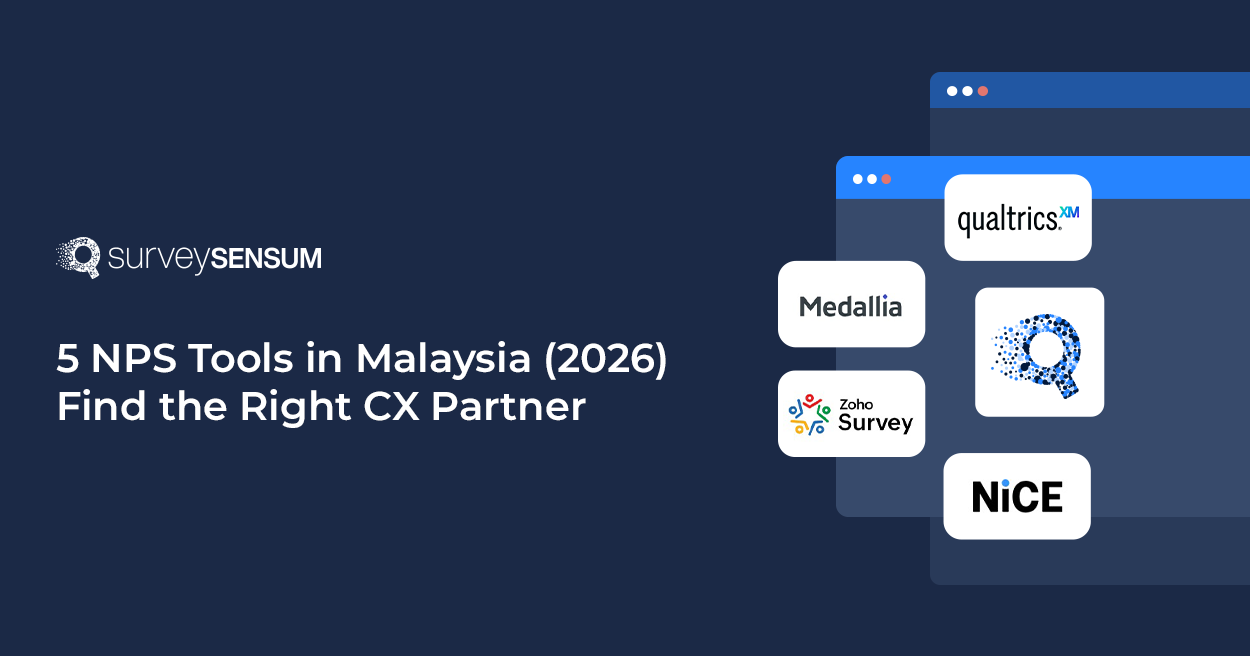

As one of the fastest-growing economies in Southeast Asia, Indonesia presents a unique set of opportunities and challenges for businesses aiming to deliver exceptional CX. To understand this industry, we recently embarked on a comprehensive study involving over 180 CX leaders in Indonesia. Our goal was to delve deep into the state of CX challenges and opportunities within the Indonesian market.
Study Coverage
The study was conducted with 180+ CX experts across various industries.
- 15% from banking
- 13% from Automotive
- 12% from both Insurance and Telecommunication
- 11% from SaaS
- 9%, 7%, and 6% from Retail, Transport, and Healthcare industries respectively.
- And the rest 14% are from Consumer durables, Hospitality, Education, Manufacturing, and Media and Entertainment.
The experience level of the industry experts ranges from senior managers to junior-level employees. 33% are senior managers, 21% are managers, 19% comprise AVP/VP/Senior leaders, 15% are C-suite executives, and 12% are junior-level executives like Analysts, etc.
State of the Current CX Programs

The first observation made is that CX improvement is a high priority for organizations. When asked the question –
→ Compared to the previous year how much priority your organization is giving to each of the following?
This is what CX leaders responded to —
- For customer experience, 72% rated it as a high priority, 24% as the same priority, and 4% rated it as a low priority.
- For product experience, 54% rated it as a high priority, 39% rated it as the same priority, and only 7% rated it as a low priority.
- For marketing experience, 43% rated it as a high priority, 50% rated it as the same priority, and only 7% rated it as a low priority.
- And finally, for employee experience, 36% rated it as a high priority, 50% rated it as the same priority, and only 14% rated it as a low priority.
CX Maturity – 3 Stages

Now, let’s talk about the 3 stages of CX maturity.
1. Passive Stage
While examining the passive stage, we observed that CX initiatives were predominantly reactive and disjointed. Measurement efforts appeared sporadic, driven by immediate needs rather than a cohesive strategy. Feedback analysis relied on rudimentary manual processes, often struggling to extract meaningful insights. Moreover, action-taking occurred at an aggregate level, with minimal emphasis on closing the loop with dissatisfied customers.
2. Reactive Stage
Transitioning to the reactive stage, organizations began integrating feedback more comprehensively into their CX strategies. Measurement evolved to encompass journey-level feedback, offering a broader perspective of the customer experience. The analysis became more sophisticated, leveraging automation and dashboarding tools for deeper insights. Moreover, action-taking improved as organizations prioritized closing the loop with dissatisfied customers.
3. Proactive Stage
At the pinnacle of CX maturity lies the proactive stage, where organizations transcend mere reactions to anticipate and delight customers. Measurement becomes holistic, incorporating 360-degree feedback from all sources, including employee inputs. Analysis transforms, harnessing AI-based Text Analysis and Predictive Churn Analysis to glean actionable insights. Furthermore, action-taking reaches new heights as organizations proactively close the loop with potential lapsers, preventing issues before they escalate.
Now, let’s assess the current stage of Indonesia’s CX programs
Well, most of the CX programs are in the reactive stage with only 41% of organizations focusing on the close-the-loop mechanism and 43% and 31% of organizations focusing on manual journey-level management and real-time journey-level management, respectively.
CX Capability: Indonesia vs World

Countries such as the Philippines, Vietnam, and Bangladesh are in the Passive stages. While Thailand, Malaysia, Indonesia, India, Russia, Dubai, Australia, France, and the United Kingdom are in the Reactive stages, and only the United States of America is in the Predictive stage.
Delving into some of the obstacles encountered within Indonesia’s CX industry:
Challenge #1: Lack of resources leading to underutilization of capabilities

18% – Proactive – with every dissatisfied customer
14% – Use customer feedback for Product/ Process level improvements
It was observed that 38% of organizations treat NPS/CSAT as KPIs but take no action on the feedback hence not closing the feedback loop with dissatisfied customers.
This is because organizations don’t have a designated CX team leader and skilled team members or even a CX team to spearhead the CX program.
About 90% of organizations don’t have a C-suite leader of CX and 40% of organizations don’t even have a dedicated CX team. This leads to organizations lacking the skills to convert data to insights and do predictive analytics needed to push themselves to the Predictive stage of CX maturity.
Challenge #2: Tech capabilities are another key roadblock

Now, in this digital age, to achieve success in any type of program, technical knowledge, skills, and tools are required.
So, to improve the state of CX in Indonesia, businesses need to invest in relevant and dedicated tools to measure and analyze their CX performance. Right now 63% of businesses don’t have integration across tools and platforms and 55% lack a consolidated view of customer data. 69% of businesses lack an AI-based system and 43% lack an advanced CX system.
Challenge #3: No support from other departments missing ROI

73% – Do not have data to calculate ROI
61% – Do not have time to calculate ROI
54% – Lack skill sets to calculate ROI
41% – No leadership guidance
Due to the lack of proper presentation of ROI reports and statistics, there is a lack of support from other departments when it comes to improving customer experience.
54% of businesses find it extremely difficult to assign ownership of CX improvements to other departments and this is because only 7% of businesses calculate and prove ROI to departments across the organization.
Now, why is this issue occurring? This is because 73% of businesses don’t even have the data to calculate ROI, 61% of businesses don’t have the time to invest in calculating ROI, 54% lack the skills, and 12% don’t have any leadership guidance.
Solutions
But the Good news is – CX leaders in Indonesia aspire to advance significantly
Despite all its challenges, the CX leaders of Indonesia aspire to advance the state of CX for their organizations. In fact, 72% of businesses now focus on journey-based integrated CX measurement, 69% use AI-based text analytics, 61% proactively close the loop, 41% now calculate the ROI, 29% do predictive modeling for churn, and 12% focus on creating a personalized experience.
But these aspirations need organizational support
The biggest obstacles of CX professionals are lack of integrations, budget, and advanced technology.
When it comes to integrations 63% of businesses do not have integrated technology systems and 55% of businesses lack a consolidated view of customer data/profiles. When it comes to budget 43% of businesses lack sufficient budget, 40% lack skilled resources, and 22% lack a clear vision and information on ROI. When it comes to the required technology, 22% buy-in from other stakeholders/departments, 69% lack AI-based systems/ advanced analytics, and 43% lack a dedicated CX feedback platform.
How do CX Champions Differentiate?
So, we have discussed all the state of CX in Indonesia and what are the common challenges businesses face, but what about the ones that are outperforming? What are they doing differently? Let’s see.
CX champions experience 3 times growth in customer base, 30% less churn, and 50% higher advocacy and loyalty. How are they doing this?
CX champions are more automated and proactive
74% of the CX champions focus on journey-level integrated CX measurement and 69% of them also focus on closing the loop in real-time.
CX champions organizations have dedicated leaders
72% of the CX champions have dedicated and skillful CX leaders who justify the ROI of the CX program to the entire organization and 51% of them also calculate and communicate ROI.
CX champions are better at using data and technology
39% of CX champions use AI-based text analytics for advanced and detailed analysis purposes, 55% focus on customer data, profile, and segmentation, and 21% do predictive analysis.
Let’s now discuss some of the use cases of CX champions.
Use case 1: CX champions focus on business metrics not just NPS
The Challenge
A prominent NBFC company was on a mission to improve its retention rate and lower its customer churn rate. So, they collaborated with SurveySensum to understand why their customers are leaving in order to retain them.
The Solution
They were measuring only the successful interactions, like when someone completes the onboarding journey and receives the loan (disbursement), they will ask how easy it was to get a loan. And some attributes of that journey.
They received a lot of good insights on how the process can be improved but have no answer on what is there in the process that is making prospects drop off and not take the loan.
So, they launched a drop-off survey among those who did not complete the loan process. The focus here was not on NPS/CSAT but more on why are we losing these people.
After receiving feedback, they ran it through Text Analytics software to identify top customer complaints and sentiments. What they discovered shed light on critical issues like:
- Lack of App Awareness: Many prospective customers expressed a need for an app-based platform but were unaware of its existence.
- Insufficient Loan Amounts: Another prevalent issue surfaced during the surveys – the loan amounts offered fell short of customers’ expectations and requirements.
Armed with insights from the drop-off surveys, the company wasted no time in implementing targeted actions to rectify the identified issues:
- Increasing App Awareness: Recognizing the pivotal role of mobile apps in modern customer interactions, the company launched a concerted effort to boost app awareness.
- Introducing Higher Loan Amount Products: The company introduced a new product offering featuring higher loan amounts. This strategic move not only addressed the shortfall highlighted in the drop-off surveys but also positioned the company as a responsive and customer-centric company.
The Result
The company experienced a 30% reduction in drop-offs and a 5% Overall Revenue Growth
Use case 2: CX champions prove ROI of efforts
The Challenge
As part of its app-driven mutual fund investment model, the financial company categorizes its customers into distinct segments – Platinum, Gold, and Silver. Despite catering to a premium clientele within the Platinum segment, a crucial gap was identified: customers lacked personalized guidance on selecting the right funds for their investment portfolios.
The Solution
Recognizing the significance of personalized assistance, the company, over a three-month campaign, assigned dedicated relationship managers to Platinum customers, aiming to provide tailored guidance and support throughout their investment journey.
The Result
On the second week of the campaign, one customer spent $125K on funds – 8X ROI.
Key Actionables
Last, but not least, let’s understand the key actionable required to improve the state of CX.
1. Investments in Team and Skill Sets
Behind every successful CX program lies a dedicated team of CX professionals armed with the requisite skills and expertise. Investing in your team ensures they have the knowledge and capabilities to drive impactful CX initiatives.
- Equip your team with specialized training in areas such as customer empathy, journey mapping, and problem-solving techniques.
- Foster a culture of collaboration across departments, encouraging teams to work together towards common CX goals.
- Empower the CX team with the support and resources they need to succeed.
2. Tech Integrations
Customers interact with brands across multiple touchpoints – from websites and mobile apps to social media and in-store experiences. Seamless integration of technology ensures a cohesive and personalized CX journey. Key tech integrations include:
- Centralize customer data and interactions through CRM systems. Harness customer insights to tailor experiences and anticipate needs proactively.
- Automate marketing campaigns and communications to deliver personalized messages at scale.
- Deploy omnichannel platforms that unify customer touchpoints, enabling seamless transitions between online and offline channels. Provide consistent and personalized experiences across all channels.
3. Advanced CX Tech
To stay ahead of the curve in CX, embrace advanced technologies that enable deeper insights and predictive capabilities.
- Implement a robust CX feedback platform that captures customer sentiments and feedback across various touchpoints. Gather insights in real-time to identify trends and areas for improvement.
- Leverage AI and NLP to analyze unstructured data customer feedback, reviews, and social media comments. Extract actionable insights and sentiment analysis to inform decision-making.
- Harness the power of predictive analytics to anticipate customer behaviors and trends. Identify patterns and correlations to forecast future outcomes and proactively address issues before they escalate.















